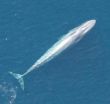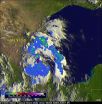(Press-News.org) A new blood test allowing doctors to predict which ovarian cancer patients will respond to particular types of treatment is a step closer following a new study by Manchester scientists.
Researchers from The University of Manchester and The Christie NHS Foundation Trust - both part of Manchester Cancer Research Centre - say the test could be developed and used in hospitals within the next few years.
It would mean medics could see which patients could benefit from blood vessel-targeting drugs - such as bevacizumab - in addition to conventional therapy. Meanwhilehile others who are not going to benefit would be spared the time and side effects associated with having the drug. The test would also help to reduce the cost to the NHS.
Ovarian cancer has seen little increase in survival rates over the last few decades and scientists are seeking new treatment strategies to improve the standard approach of surgery and chemotherapy.
A recent advance has been to target the development of new blood vessels within the tumour - preventing the cancer from receiving the nutrients it needs to grow.
Bevacizumab, one of the blood vessel-targeting drugs, has shown significant but modest improvements in patient survival so doctors are seeking ways to predict which patients are most likely to gain an advantage from this type of drug.
The research team looked at blood samples from patients enrolled in an international trial of bevacizumab. These patients received either standard chemotherapy treatment alone or chemotherapy plus the blood vessel-targeting drug.
Professor Gordon Jayson, Professor of Medical Oncology at The University of Manchester and Honorary Consultant at The Christie who jointly led the study, said: "We are keen to identify predictive biomarkers - measures that can indicate how well a patient will respond to treatment - so we can better target these drugs to patients most likely to benefit.
"We investigated levels of a range of proteins in patients' pre-treatment blood samples to see if any were associated with improved survival."
The findings, published recently in the journal Clinical Cancer Research, show that two particular proteins - Ang1 and Tie2 - could be used in combination to predict patient response. Patients with high levels of Ang1 and low levels of Tie2 were most likely to benefit from bevacizumab. Both these proteins are involved in controlling the formation of new blood vessels. Conversely, they found that patients with high levels of both proteins did not benefit from the additional drug.
Study co-author Professor Caroline Dive, from the Cancer Research UK Manchester Institute based at The University of Manchester, added: "We will now look to further explore the potential of using a blood test to personalise treatment for ovarian cancer patients. Moving towards a more individualised treatment plan specific for each patient and their particular tumour is key to improving outcomes for patients while sparing those unlikely to benefit from potential side effects of therapy."
INFORMATION: END
New blood test could offer more tailored treatment of ovarian cancer
2014-09-05
ELSE PRESS RELEASES FROM THIS DATE:
California blue whales rebound from whaling, first of their kin to do so
2014-09-05
The number of California blue whales has rebounded to near historical levels, according to new research by the University of Washington, and while the number of blue whales struck by ships is likely above allowable U.S. limits, such strikes do not immediately threaten that recovery.
This is the only population of blue whales known to have recovered from whaling – blue whales as a species having been hunted nearly to extinction.
Blue whales – nearly 100 feet in length and weighing 190 tons as adults – are the largest animals on earth. And they are the heaviest ever, weighing ...
Glanville fritillary genome sequenced at the University of Helsinki
2014-09-05
The Glanville fritillary has long been an internationally known model species for ecology and evolutionary biology, whose population biology has been studied on the Åland Islands for more than twenty years. Now the species has become even more significant. Led by Research Professor Ilkka Hanski, the Metapopulation Research Group (MRG) at the University of Helsinki has sequenced the full genome of the Glanville fritillary together with three groups from the Institute of Biotechnology at the same university.
Before the sequencing of the Glanville fritillary genome, which ...
Near-extinct African amphibians 'invisible' under climate change
2014-09-05
An international team of researchers has found that the majority of threatened species are 'invisible' when using modern methods to predict species distributions under climate change.
Using African amphibians as a case study, the researchers found that more than 90 per cent of the species listed as threatened on The IUCN Red List of Threatened Species are omitted by the most popular tools for species distribution modelling.
The study, led by researchers from the Universities of York and Copenhagen and the United Nations Environment Programme World Conservation Monitoring ...
Caffeine therapy for apnea of prematurity does not have long-term harmful effects on sleep
2014-09-05
Caffeine therapy for apnea of prematurity has no long-term harmful effects on sleep or control of breathing, according to a new study of 201 preterm children assessed at ages 5-12, the first study in humans to examine the long-term effects of neonatal caffeine treatment on sleep regulation and ventilatory control.
"Animal studies have suggested that administration of neonatal caffeine to premature infants, while improving survival and other outcomes, may have long-term detrimental effects on sleep and control of breathing during sleep," said lead author Carole L. Marcus, ...
Research finds no association between wearing a bra and breast cancer
2014-09-05
PHILADELPHIA — A population-based case-control study found no association between bra wearing and increased breast cancer risk among postmenopausal women, according to research published in Cancer Epidemiology, Biomarkers & Prevention, a journal of the American Association for Cancer Research.
"There have been some concerns that one of the reasons why breast cancer may be more common in developed countries compared with developing countries is differences in bra-wearing patterns," said Lu Chen, MPH, a researcher in the Public Health Sciences Division at Fred Hutchinson ...
Magnetic nanocubes self-assemble into helical superstructures
2014-09-05
Materials made from nanoparticles hold promise for myriad applications, from improved solar energy production to perfect touch screens. The challenge in creating these wonder-materials is organizing the nanoparticles into orderly arrangements.
Nanoparticles of magnetite, the most abundant magnetic material on earth, are found in living organisms from bacteria to birds. Nanocrystals of magnetite self-assemble into fine compass needles in the organism that help it to navigate.
Collaborating with nanochemists led by Rafal Klajn at the Weizmann Institute of Science in Israel, ...
A lifetime of outdoor activity may contribute to common eye disease; sunglasses may help
2014-09-04
BOSTON (Sept. 4, 2014) — Residential geography, time spent in the sun, and whether or not sunglasses are worn may help explain why some people develop exfoliation syndrome (XFS), an eye condition that is a leading cause of secondary open-angle glaucoma and can lead to an increased risk of cataract and cataract surgery complications, according to a study published on Sept. 4 in JAMA, Ophthalmology.
Despite improvements in understanding the cause of this common yet life-altering condition, more work needs to be done. "The discovery that common genetic variants in the lysyl ...
NASA sees Dolly's remnants bringing showers to the Rio Grande Valley
2014-09-04
Tropical Storm Dolly fizzled out quickly on September 3 after making landfall in eastern Mexico, and NASA's Aqua satellite saw some of the remnants moving into southern Texas. NASA's TRMM satellite analyzed the rainfall occurring in the storm as it was approaching landfall.
NASA's Aqua satellite captured the remnants of Tropical Depression Dolly over northeastern Mexico on Sept. 3 at 19:40 UTC (3:40 p.m. EDT). The image, captured by the Moderate Resolution Imaging Spectroradiometer or MODIS instrument showed the center of Dolly over northeastern Mexico with a band of thunderstorms ...
Hurricane Norbert pinwheels in NASA satellite imagery
2014-09-04
The Eastern Pacific's Hurricane Norbert resembled a pinwheel in an image from NASA's Terra satellite as bands of thunderstorms spiraled into the center. NASA's Global Precipitation Measurement or GPM mission has helped forecasters see that Norbert has lost some of its organization early on September 4.
The MODIS instrument or Moderate Resolution Imaging Spectroradiometer aboard NASA's Terra satellite captured a visible picture of Tropical Storm Norbert on Sept. 4 at 2:15 p.m. EDT when it resembled a pinwheel. The western bands of Norbert were moving over Socorro Island, ...
Climate-smart agriculture requires three-pronged global research agenda
2014-09-04
Faced with climate change and diminishing opportunities to expand productive agricultural acreage, the world needs to invest in a global research agenda addressing farm and food systems, landscape and regional issues and institutional and policy matters if it is to meet the growing worldwide demand for food, fiber and fuel, suggests an international team of researchers.
In a paper appearing online in the journal Agriculture and Food Security, the authors summarize the findings of the second international Climate Smart Agriculture conference held in March 2013 at UC Davis.
"Climate-smart ...




